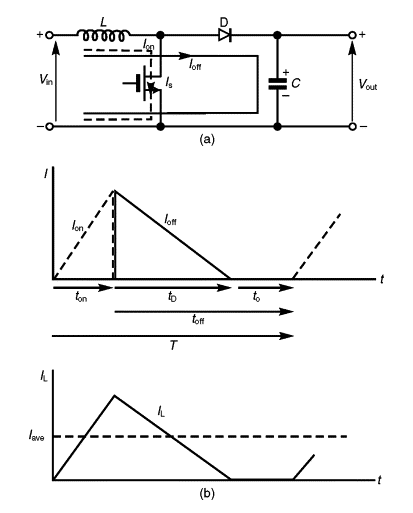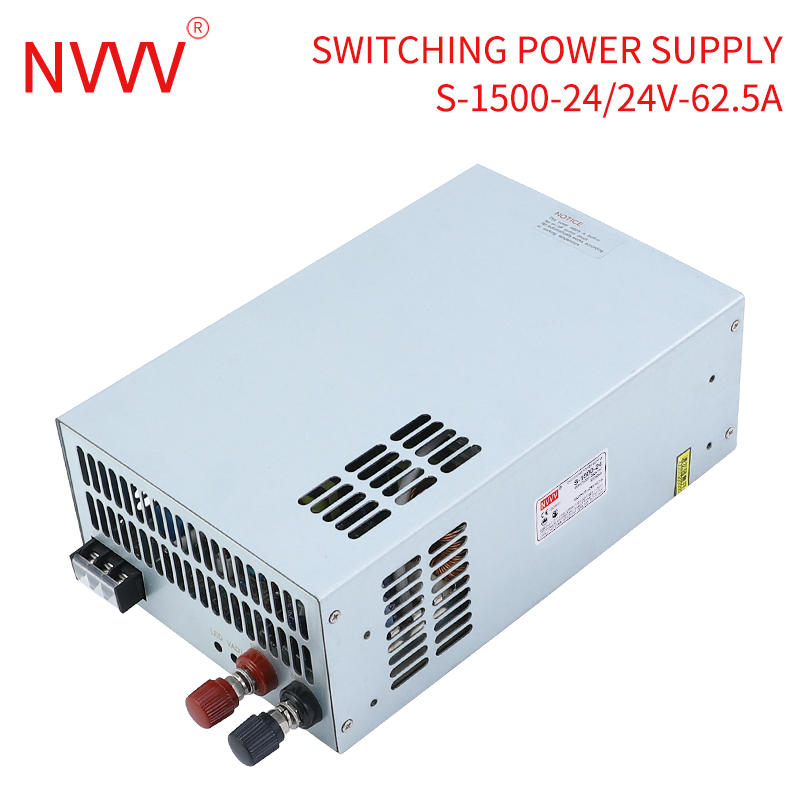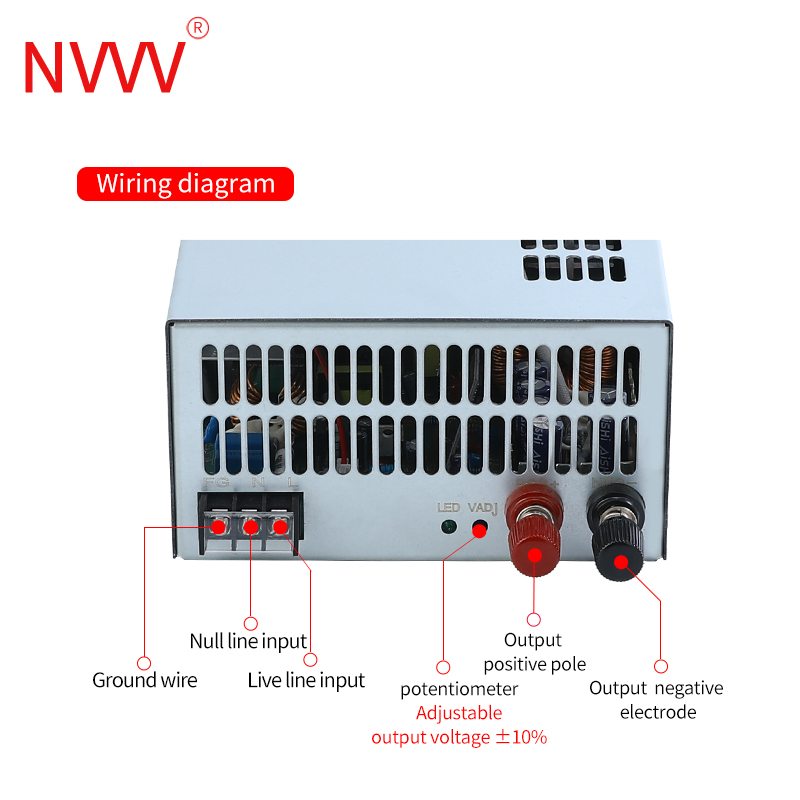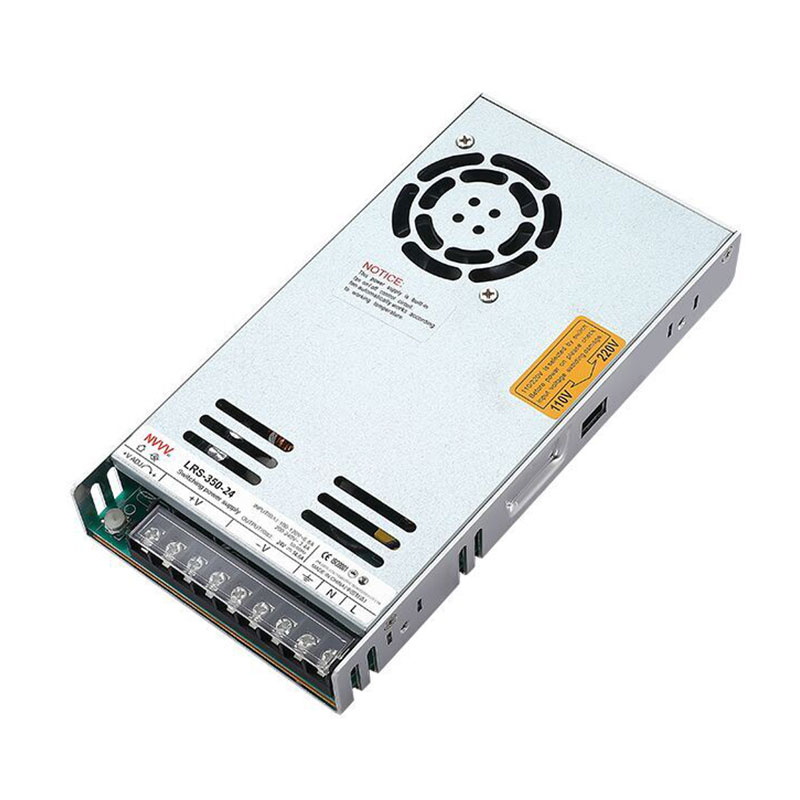What are the four types of SMPS and Which one is better?
Switched Mode Power Supply (SMPS) is a device that converts input power (AC or DC) into a stable power supply required by the device through high-frequency switching technology. It is widely used in electronic equipment, communication systems, industrial control, and many other fields. The advantages of SMPS are high efficiency, small size, and low heat loss. According to different application scenarios and design requirements, SMPS can be divided into four main types. In this article, we will explore these four types of SMPS, analyze their working principles and application scenarios, and compare which type is more suitable for specific needs.
1. What are the four main types of SMPS?
Based on the way of power conversion and regulation, SMPS can be roughly divided into the following four types: buck type, boost type, buck-boost type, and flyback type. Each type has its unique characteristics and uses in practical applications.
Buck Converter
Buck SMPS is one of the most common types, mainly used to convert higher input voltage to lower output voltage. For example, it can convert 24V input voltage to 12V or lower output voltage.
Working Principle:
The buck converter controls the conduction and disconnection of current through the switching element, so that energy is stored in the inductor and then released to the load through the diode. During the whole process, the high-frequency switching of the switch causes the input voltage to drop to the target output voltage on average.
Application Scenarios:
Buck SMPS is widely used in small electronic devices, such as mobile phone chargers, laptop adapters and other devices. It is suitable for scenarios where the input voltage is much higher than the output voltage.
Advantages:
The buck converter is highly efficient and simple in design, making it the first choice for low-power devices. However, it is not suitable for occasions where the voltage needs to be increased.
Boost Converter
The boost SMPS is used to increase low voltage to high voltage output, and is usually used in occasions where the voltage is low but a higher output voltage is required.
Working Principle:
The boost converter stores energy in the inductor and then releases a voltage higher than the input voltage through a combination of switches and diodes. Through high-frequency switching and pulse width modulation, the voltage can be increased and the output stability can be maintained.
Application Scenarios:
Boost SMPS is often used in application scenarios where the voltage needs to be increased, such as electric bicycles, solar charging systems, or some battery-powered devices that require high voltage.
Advantages:
Boost SMPS is very suitable for situations where low input voltage requires high output voltage, and it has high efficiency, but its design is relatively complex and the cost is slightly higher.
Buck-Boost Converter
Buck-Boost SMPS is a converter that can provide boost or buck according to demand, and is suitable for situations where the input voltage may be higher or lower than the target output voltage.
Working principle:
The buck-boost converter can provide a stable output higher or lower than the input voltage by switching the circuit structure under different input voltage conditions. Its design is based on a combination of buck and boost converters, which can flexibly adjust the output voltage.
Application scenario:
This type of SMPS is very suitable for battery-powered devices because the battery voltage changes continuously during the discharge process. Buck-boost SMPS is often used in handheld devices, wireless sensors and some industrial equipment.
Advantages:
The flexibility of buck-boost enables it to adapt to applications with different voltage inputs, but its circuit design is complex and its efficiency is lower than that of dedicated boost or buck converters.
Flyback Converter
A flyback SMPS is a switching power supply with high-efficiency isolation function, which is often used in devices that require high-voltage isolation. It uses a transformer to achieve power conversion and isolation.
Working Principle:
A flyback converter provides a stable output voltage by storing electrical energy on the primary side of the transformer and then releasing the energy to the secondary side when the switch is turned off. This power supply has good electrical isolation characteristics.
Application Scenarios:
Flyback SMPS is often used in situations where electrical isolation is required, such as televisions, power adapters, industrial control systems, and communication equipment.
Advantages:
Flyback converters are very popular in high-voltage applications that require isolation, especially in devices with high safety requirements. However, due to the complexity of its working principle, the design and maintenance costs of flyback converters are high.
2. Which type of SMPS is better?
Different types of SMPS have their own advantages and disadvantages. Choosing which one is "better" depends on the application scenario, power requirements, and specific requirements of the device.
Which type is more suitable for household appliances?
For home appliances, a buck SMPS is usually more suitable because it can convert higher input voltages to common 12V or 5V outputs, suitable for devices such as mobile phones, laptops, LED lights, etc. It has a simple design and is relatively inexpensive, making it suitable for home use.
Which type is suitable for industrial applications?
In industrial applications, buck-boost and flyback SMPS are more common. Industrial equipment often needs to handle fluctuating input voltages and sometimes requires higher voltage isolation requirements. In this case, the flyback converter is one of the best choices due to its high isolation characteristics and stable performance. The buck-boost type is often used in factory equipment or industrial automation equipment due to its flexibility.
Which type is suitable for battery-powered devices?
The boost SMPS is ideal for battery-powered devices, especially when the device requires high voltage and the battery provides a low voltage. The boost converter can effectively increase the voltage and keep the device running stably. In addition, 24vdc power supply is also very common in battery-powered systems, especially in areas such as solar charging and power tools, where the 24V input voltage can provide strong power output support.
Which type performs better in a changing environment?
Buck-boost SMPS is better suited for environments with unstable voltage or battery power due to its ability to flexibly cope with different input voltages. This type of converter can automatically adjust the output voltage according to the changes in the input voltage to ensure stable operation of the device.
3. How to choose the right SMPS?
There are several key factors to consider when choosing the right SMPS:
Power requirements
First, choose the appropriate SMPS type based on the power requirements of the device. Lower-power devices such as mobile phones or LED lights can use a buck converter, while high-power devices such as industrial machinery require a flyback converter or a buck-boost converter to cope with complex power requirements.
Voltage range
Determine the input and output voltage range of the device. If the input voltage is low and the output voltage is high, a boost switch mode power supply may be the best choice; if the input voltage is high, a buck SMPS may be more suitable. For devices that require flexible voltage adjustment, a buck-boost converter is an ideal choice.
Isolation requirements
If the application scenario requires high voltage isolation, such as industrial control systems or high-voltage equipment, the flyback SMPS is the safest choice due to its characteristics of isolating the circuit through a transformer.
Efficiency and cost
There is a trade-off between high efficiency and low cost. Buck converters are relatively low cost, but the efficiency and stability of boost and flyback converters are better in some applications, although the price is relatively high. Therefore, users need to balance cost and performance according to specific needs when choosing.
4. The importance of SMPS in modern life
With the continuous advancement of technology, SMPS has become an indispensable power supply device in modern electronic devices. From home appliances to industrial equipment, from personal consumer electronics to large-scale communication systems, SMPS is widely used for its high efficiency, flexibility and stability.
For example, the school network laptop charging cabinet uses 24V SMPS to provide stable power; embroidery machines, 3D printers and watering machines also rely on 24-volt DC power supply systems to ensure their smooth operation. In the future, with the development of green energy and smart grids, the application field of SMPS will be further expanded to provide more efficient and environmentally friendly power conversion solutions.
Conclusion
There are many types of switch mode power supplies (SMPS), each with its own unique advantages and applicable scenarios. Buck types are suitable for small devices, boost types are suitable for battery-powered devices, and buck-boost types perform well in cases of large voltage fluctuations. Flyback SMPS is particularly important in devices that require safety due to its high isolation. In practical applications, the choice of which switching mode power supply depends on the power requirements, input voltage range, and the working environment of the device. By reasonably selecting the right SMPS, users can ensure efficient and stable operation of the device while also achieving energy saving and optimization of power.











